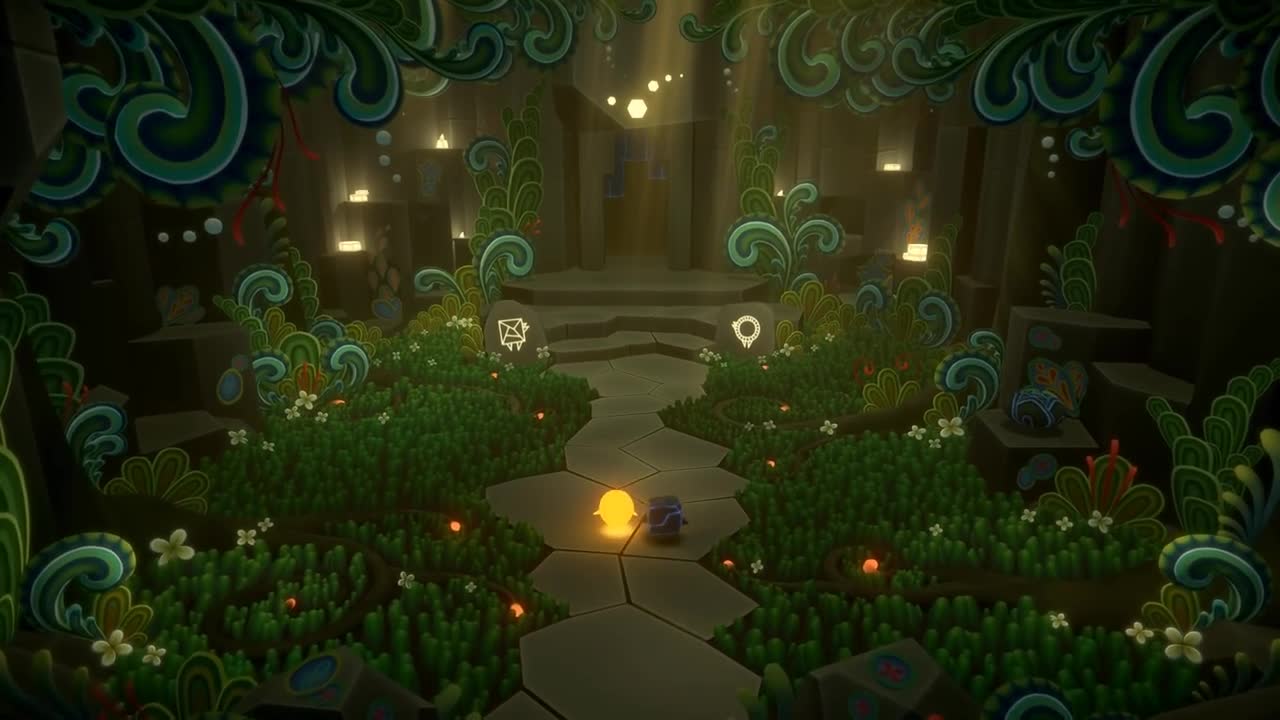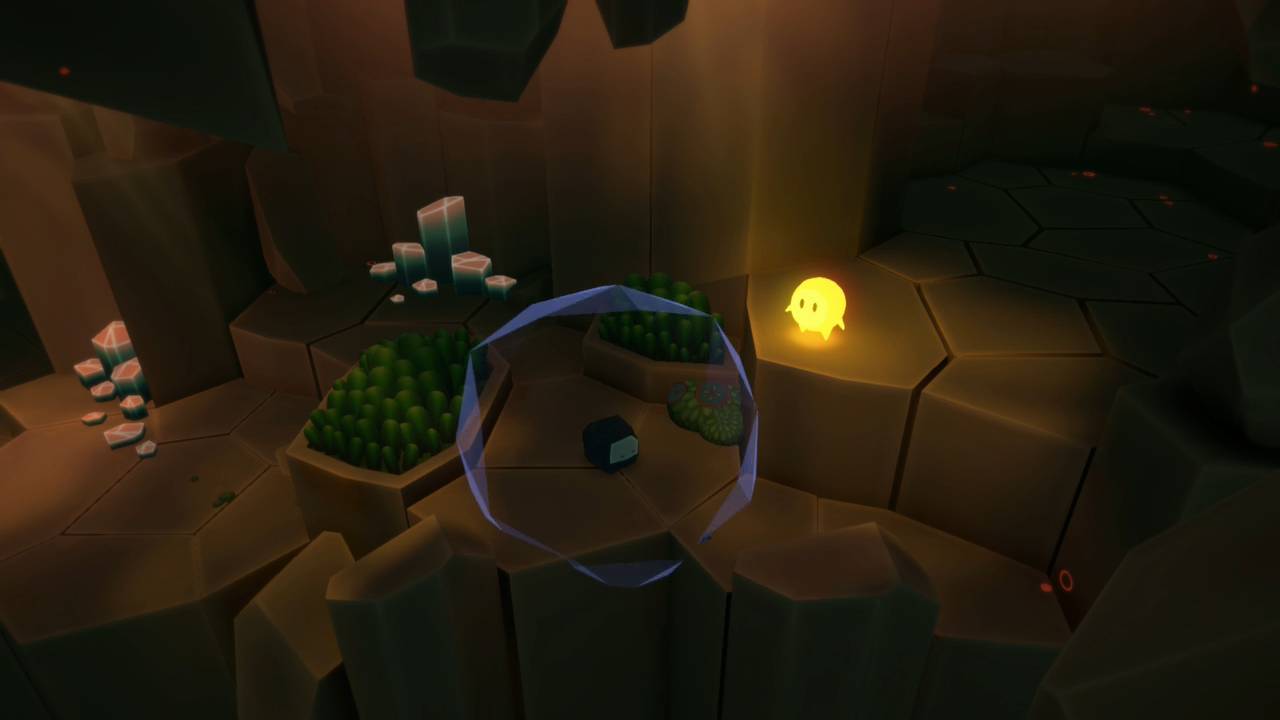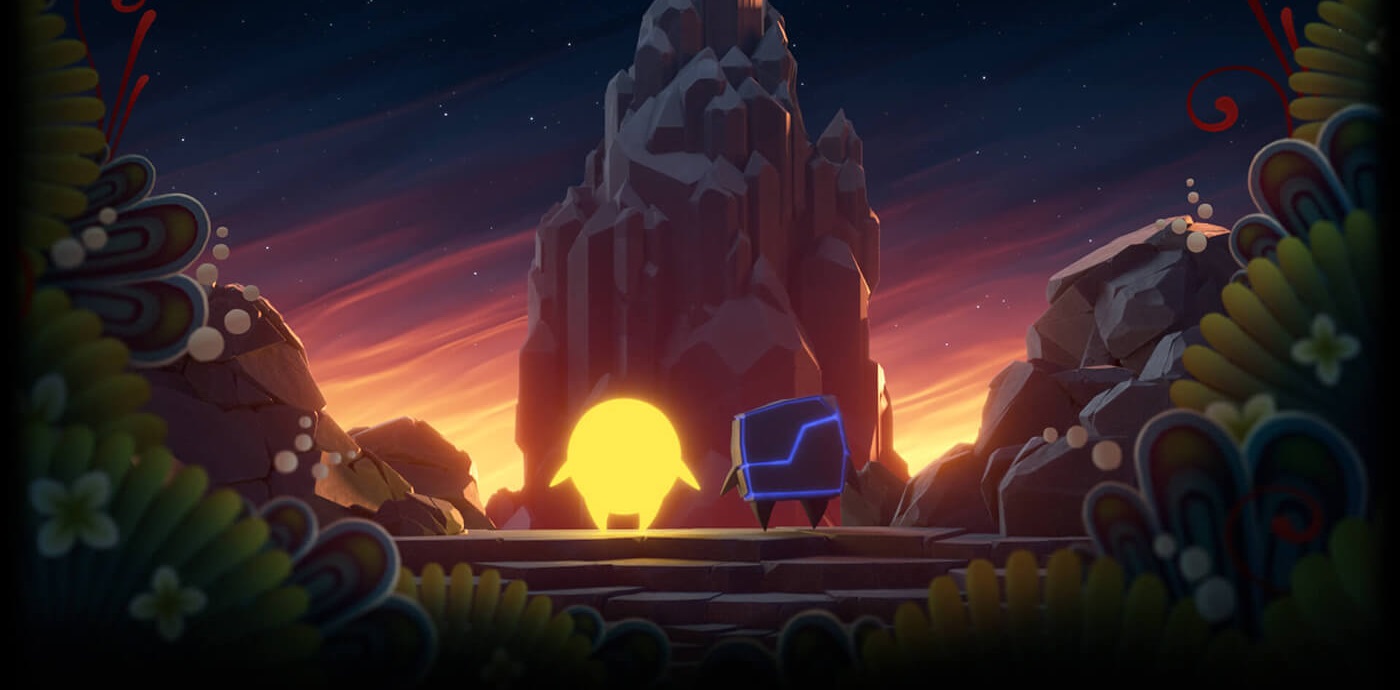It wasn’t that many years ago that the talk of the town was how couch co-op was gone. With major shooters removing split screen, people thought that experience would be gone. Along comes the Switch, literally built for co-op thanks to its two attached controllers, and indie games such as Pode, that can be played solo or co-op, made better with co-op only by the company you keep.
Pode is a puzzle game which has you controlling two little creatures, a rock cube and a light sphere. You can either switch between them to move each character as needed or using co-op you can control a character each. Fortunately, the puzzles aren’t so time critical that it doesn’t hold you back playing it solo.
Each of the creatures have their own abilities, which expand throughout the game. Early on the light sphere can shine brighter and have plants grow, and the rock can make rocks formations appear in certain places. These moves aren’t used wherever but cleverly dictated locations in each puzzle. Doing these allow you to climb and traverse the puzzle to its exit.

Challenges quickly ramp up as the creatures use more abilities, including early ones such as the rock being able to suck things in and spit them out, including the light sphere to shoot him over a gap. Light sphere on the other hand learns how to leave a glowing light it can return to once, meaning you can use rock cubes shoulders to jump up to a ledge, leave this there jump back down, and let rock cube use light spheres shoulders.
These early examples of challenges show how well the game uses its two characters to full effect, and thanks to the ability to leave a character glowing when you switch between them, it never feels hampered by playing it solo. Puzzles do get a lot harder than that, with some I spent embarrassing amounts of time on, but I wont spoil them for you. The game is especially good at giving you a direction, and only when you give up on that direction and start to explore, you find what you needed to complete the puzzle you have stared at for too long.

The game has a cute style to it, with its two charming characters epitomising this. The world they are in has blocky cartoon styled shapes, like its chunky rocks, and overly huge plants. The massive intricate plants that grow are especially satisfying because you use light spheres’ glow to grow them, so it does give a weird feel of ownership as a large flower or vine grows in a cute spiral at your hands.
The game uses quiet ambient music in the background which I would like to say helps when you stare at a puzzle for an extended period with no idea how to proceed, but it doesn’t, the music is nice though. The weirdest element of the sound is the rocks sound. There is little by the way of sound effects but transitioning between characters has them emit a sound. The light sphere makes a soft whistling sound, but the rock cube makes a “meh meh” sound that is more akin to when a piece of software is saying you can’t click there. Even after hours of play I never adjusted to that sound, and even now it continues to make me think I’m trying to make the game do something out of bounds.
Pode is another charming addition to the Switch’s library. It’s not something that’s going to blow everyone away, but if you are after a simple and fun puzzle platformer that will challenge you while charming you with its aesthetic, then Pode wins there. It’s also a perfect tick in the box for some hard but relaxing co-op time at home.
[rns_reactions]
Released: June 2018
Rating: R16
Platforms: Nintedno Switch
Genre: Puzzle
Developer: Henchmen & Goon
Publisher: Nintendo</p

